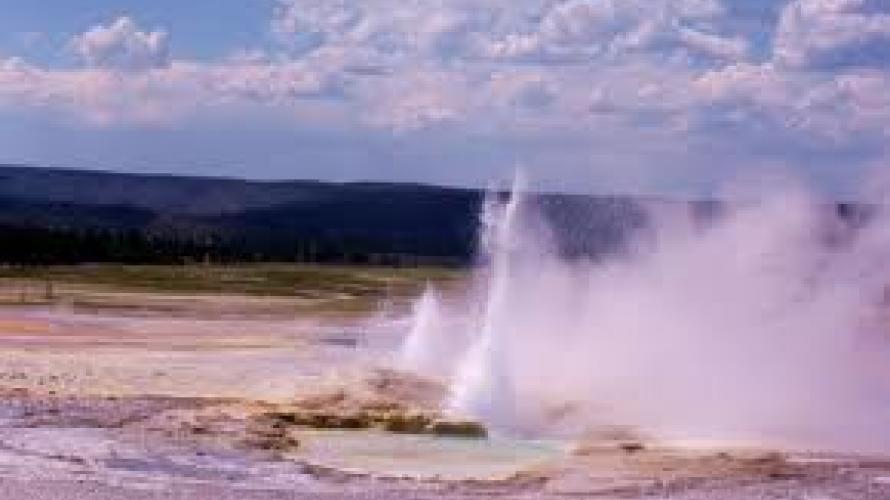
 Jenna Caplette migrated from California to Montana in the early 1970s, first living on the Crow Indian reservation, then moving to Bozeman where she owned a downtown retail anchor for eighteen years. These days she owns Bozeman BodyTalk & Energetic Healthcare, hosts a monthly movie night, teaches and writes about many topics.
Jenna Caplette migrated from California to Montana in the early 1970s, first living on the Crow Indian reservation, then moving to Bozeman where she owned a downtown retail anchor for eighteen years. These days she owns Bozeman BodyTalk & Energetic Healthcare, hosts a monthly movie night, teaches and writes about many topics.
Afternoon on a gloriously warm summer day and the steam that can obscure your view of Yellowstone's geysers and hot pools dissolves, unveiling the varied palate of colors that define the basins. That same summer heat impacts the temperatures of the thermal features, nurturing the growth of seasonal bacteria and plants. Bugs skim the surface of the water. Sunlight gets caught in the steam from exploding geysers. It's a photographer's paradise.
A little bit of footwork and preparation can make a big difference in how your exploration of Yellowstone’s thermal features unfolds. To choose which geysers you want to visit, stop by one of the park visitor centers. Find out when and how high they’re predicted to erupt. That information helps as you organize your outing so that you have the right equipment at hand, at the right time. Too often once-in-a-lifetime photographic opportunities pass visitors right by while they fumble for the right lens or filter. Remember to pack along an extra camera card and be sure your camera’s battery is charged.
When you arrive at your chosen destination, position yourself to separate a geyser’s explosion of steam from white afternoon clouds, and so that you’re not downwind from the geyser’s eruption. You need to keep the steam, silica, and acid water that's so pervasive in the geyser basins off your optics. Marsha Phillips of Bozeman's F-11 Photographic Supplies says it's most important to have a protective filter for your camera lens, and clean that often with a standard lens cleaning cloth. Wipe steam from the exterior of your camera and lens with a micro fiber towel. Then, to protect all of your camera's parts, Phillips suggests a product developed by Op Tech USA, a Montana-based manufacturer: the Rainsleeve is a clever, low-tech clear plastic sleeve will keep moisture off all kinds of your gear.
In the field, you’ll find that some geysers and hot pots can only be seen from the boardwalk. In that case, an ultra wide-angle lens allows you to capture the entire feature. To isolate enticing details, use a telephoto. In the Old Faithful area you have the option of hiking to an overlook. From this and other park overlooks, your telephoto will allow you to separate a specific feature or two; your wide angle will embrace the grand view. Use your lens hood. It reduces glare and protects your optics.
The bright, starkly white mineral deposits of thermal basins and terraces can throw your camera’s meter off. Your digital camera’s histogram is the only accurate gauge of proper exposure and can be a real image-saver. Make sure you know how to turn on the histogram, and that you know how to use the “plus” and “minus” exposure compensation to correct any problems. Don’t forget to bring the camera’s instruction manual.
While you’re standing on the boardwalk setting up for your photograph, be sure to leave plenty of room for other visitors to pass by. Courtesy goes a long way during the park’s busiest season, and you don’t want anyone knocking over your equipment.
You’re about to discover that in Yellowstone spectacular photo opportunities abound. Prepare yourself to enjoy them.
